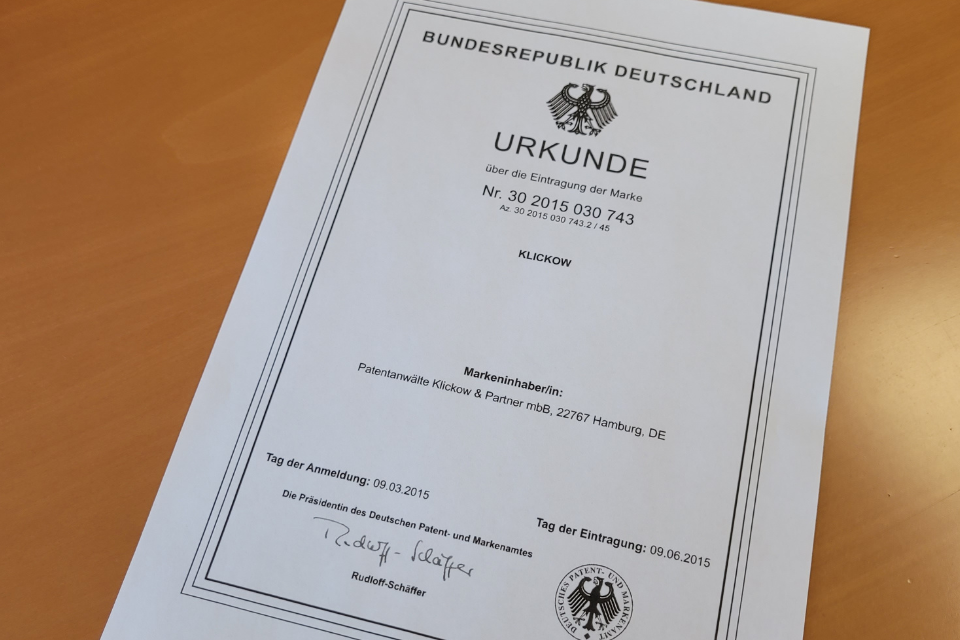Your internationally operating patent law firm from Hamburg
Your internationally operating patent law firm from Hamburg
Your internationally operating patent law firm from Hamburg
Your internationally operating patent law firm from Hamburg
Home – Which property right?

A patent protects a technical invention - i.e. a new solution to a technical problem. It can be a product (e.g. a machine, a medicine or a technical component) or a process (e.g. a manufacturing or measuring process).
Requirements for a patent

A trademark protects a sign that distinguishes the goods or services of one company from those of other companies. This includes, for example:

A design (also registered design or formerly: "design patent") protects the external appearance of a product. This includes:

Like a patent, a utility model protects a technical invention, i.e. a new solution to a technical problem. In contrast to a patent, however, only products (e.g. machines, medicines or technical components) can be protected. Processes are excluded from utility model protection.
Requirements for utility model protection